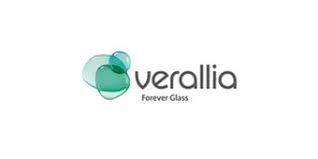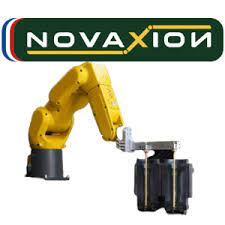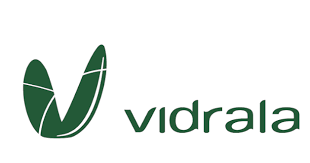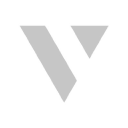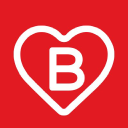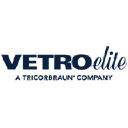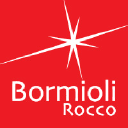Synthèse
The global glass bottle market, valued at $40.2 billion in 2023, is anticipated to grow at a CAGR of 5.7% from 2023 to 2033, reflecting an increased demand driven by environmental awareness, the rise of craft breweries and distilleries, and brands creating high-end products. Despite the impact of the Covid-19 pandemic leading to a 12.5% market decline in France, the market rebounded by 2021, surpassing its pre-pandemic level with a value of €4.81 billion. Challenges such as raw material cost volatility and energy-intensive production have been exacerbated by the energy crisis and soaring natural gas prices. French exports of glass bottles saw significant growth, up 24.5% in 2022 compared to 2020, reaching an all-time high of $901.4 million. The domestic wine sector remains a primary user of glass bottles; however, wine consumption per capita has dropped from 130 liters to 37.2 liters in 2022. Despite these challenges, glass bottles are seen as superior for health, taste preservation, quality, and environmental sustainability, with eco-design efforts reducing packaging weight by 18% in 25 years.
Demand for Glass Bottles Flourishes Amid Environmental and Health Concerns in Country Market Analysis
The demand for glass bottles in the market has seen a significant upward trend, influenced by a heightened awareness of environmental issues and concerns over health risks associated with other packaging materials. Glass packaging, known for its zero chemical contamination and preservation of product tastes, has captured the interest of various sectors, including pharmaceuticals and premium beverages. This market analysis reveals that consumers are progressively gravitating towards products with minimal environmental impact, which has favorably positioned glass bottles as a preferable choice. The recycling rate for glass in the country has been commendable, reaching a high percentage of over 85%. This figure exemplifies the consumers’ growing environmental consciousness, which profoundly impacts their packaging preferences. Data projections for the glass bottle market estimate its worth around $40 billion and suggest it is poised to grow at a compound annual growth rate of approximately 5 to 6% in the upcoming decade.
This positive trajectory is sustained by an increasing preference for environmentally friendly packaging solutions, such as glass over plastic, which can only be recycled a limited number of times before becoming waste. The domestic wine sector, occupying a predominant position in the country, has been a substantial consumer of glass bottles, reinforcing the demand in the glass industry. An interesting trend within the wine market involves consumers' shifting preference towards higher-quality products, which aligns with the market's drive towards premiumization. In response to the wine sector's needs, the glass bottle industry has adapted its offerings to suit the demand for premium and environmentally friendly packaging options.
Within the country, the glass bottle industry comprises between 140 and 150 establishments, employing a workforce fluctuating around 18,000 individuals. Significant production facilities are strategically located near prolific vineyards, reducing transit distances and nurturing a locally-focused industry. This proximity between manufacturers and primary consumers—wine producers—allows for swift response times to market demands, a factor that contributes to the resilience and robustness of the sector.
The market's general consensus favors glass bottles for their ability to maintain the integrity of the contents, making them a vessel of choice not only for wines and spirits but also for an assortment of beverages and liquid products. With the environmental spotlight on reducing plastic usage, glass bottles stand out as a sustainable and viable solution, promising continued market expansion and success in the years ahead.
Major Contenders in the Glass Bottle Industry
The glass bottle market is shaped by several influential companies, each leaving a distinct mark on the global landscape. Among the key players underpinning this industry's structure are giants known for their extensive reach, production capabilities, and innovative contributions.
- Verallia stands prominently as a juggernaut in the field, providing a vast array of standard and bespoke glass containers. Renowned for its dedication to sustainability and eco-design, Verallia is a beacon of modern glass packaging solutions, catering to a diverse spectrum of needs—from still and sparkling wines to beers and soft drinks.
- Dominated by Owens-Illinois (O-I), the market also witnesses the prowess of a company that has entrenched itself deeply within the domain of glass bottle manufacturing. O-I's extensive catalog, paired with its commitment to technological advancement and sustainability, showcases its ability to adapt to evolving market demands while maintaining efficiency and quality.
- Vidrala is another name synonymous with leadership in glass bottle production. The company's strategy often involves a continuous quest for quality improvement, coupled with a keen interest in advancing production techniques, which underscores its strong position in the marketplace.
- The French landscape is graced by Saverglass, a company that carves its niche by focusing on the premium segment. With its origins dating back to 1897, Saverglass bridges tradition with cutting-edge design, catering to discerning clients in the luxury spirits and fine wines market.
These players not only serve as the backbone of the industry but also contribute to its dynamism by responding adeptly to challenges such as fluctuating raw material costs, energy prices, and the call for environmentally friendly production practices. Their collective efforts form a resilient and adaptive industry capable of enduring crises and meeting the rising demands of consumers for quality and sustainability in glass bottle packaging.
à la compréhension de ce marché
Détail du contenu
 Informations
Informations
- Nombre de pages : 30 pages
- Format : Version digitale et PDF
- Dernière mise à jour : 03/10/2023
 Sommaire et extraits
Sommaire et extraits
1 Market overview
1.1 Definition and scope of study
Glass bottles are elongated, narrow-necked containers of varying sizes designed to hold liquids, particularly beverages such as wine, beer and spirits, but increasingly also soft drinks like soft drinks or milk. Glass is mostly composed of silica-rich sand, but it is extremely common to use cullet, recycled pieces of used glass, in the manufacturing process. The proportion of cullet can range from 10% to 90%, depending on the quality required. Vitrifying agents are also added to give the glass the desired properties.
Unlike other packaging methods, glass enjoys a flattering image with the public, symbolizing both quality and low environmental impact. In fact, unlike plastic, glass is infinitely recyclable, and the glass recycling rate in France reached 88% in 2021.
The global glass bottle market will be worth $40.2 billion in 2023, and is expected to grow at a CAGR of 5.7% over the next ten years. This market is benefiting from the desire of certain brands to create increasingly high-end products, from global environmental awareness, and also from the rise of craft breweries and distilleries, even if in France the wine market remains predominant. on a global scale, half of all glass bottles produced are destined for the beer sector.
In a concentrated market dominated by three international leaders(Verallia, Owens-Illinois and Vidrala), a few French players stand out. Saverglass , in particular, is expanding in the premium segment. However, French manufacturers face many difficulties in the current environment. Glass manufacturing costs fluctuate enormously according to the cost of raw materials, and the industry is extremely energy-intensive, especially in terms of natural gas, the price of which has been soaring for several years now.
However, manufacturers can look forward to a gradual phase-out of plastic and the imminent return of the deposit system, which should restore glass to its tarnished glory.
1.2 Global market
The global glass bottle market, estimated at $**.* billion in ****, is expected to register a CAGR of *.*% over the period **** - ****, reaching $** billion in ** years' time.
Sales projections for the global glass bottle market World, **** - ****, in $ billions Source: ****
Glass bottles are safer for your health, as there is no risk of ...
1.3 Domestic market
We offer an estimate of the size of the hollow glass industry in France, based on INSEE data. The activity is referenced under NAF code"**.** - Manufacture of hollow glass". Hollow glass refers to all glass containers: bottles, flasks and jars. The proposed estimate therefore represents a high end of the ...
1.4 Balance of trade
International trade in glass containers, including bottles, is tracked under code ****** "Glass carboys, bottles, flasks, jars, pots, tubular containers and other glass containers for transport or commercial packing, and glass preserving jars (***)". We'll be looking at imports and exports of these products, as well as our main trading partners, to identify ...
1.5 A resilient sector despite repeated crises: Covid-19, war in Ukraine, inflation
During the health crisis, as alcohol consumers drank more at home, they preferred larger containers such as wine cubes. In fact, the wine industry has seen a sharp rise in sales of wine in BIBs. But this in no way detracts from wine lovers' structural loyalty to glass bottles as a ...
2 Demand analysis
2.1 Demand stimulated by environmental and health concerns
"Glass packaging will be the container of the future", says Jacques Bordat, President of the French Federation of Glass Industries. Indeed, it is both safe for human health and less polluting than other materials such as plastic, and it perfectly preserves the tastes and smells of the food and beverages it ...
2.2 The wine sector, the driving force behind the glass industry
The main consumer of glass bottles is the wine and spirits industry. Artisanal fruit juices and water can also frequently be found in this form, as can certain soft drinks, in small format, replacing cans. The market is therefore primarily B*B.
Grape wine market size in France France, **** - ****, in ...
2.3 The French demand greater transparency in food packaging
In recent years, consumer demand for transparency has continued to grow. The French want to know everything about the products they consume, whether to protect their health or the planet. An LSA study provides an indication of this new expectation: while **% of those surveyed want more data on product origin, **% say ...
3 Market structure
3.1 A local industry
The glass bottle industry is spread across the whole of France, with most plants located close to major vineyards to reduce distances traveled. There are some forty dedicated furnaces in France. The logistics chain is relatively short, with glass plants located on average *** km from their customers[***].
The stages in the ...
3.2 Production concentrated in the north
The number of establishments operating in the hollow glass manufacturing sector is increasing slightly, but has remained between *** and *** since ****. It is therefore a relatively closed market.
Number of establishments working in hollow glass manufacturing France, **** - ****, in units Source: ****
The number of employees fell during the health crisis, but has ...
3.3 Sand, the main constituent of glass
In April ****, the United Nations Environment Programme(***) warned of a potential sand crisis in a report. The document highlights the risk of a shortage of sand, a widely exploited resource only surpassed by water. The report highlights unregulated and growing exploitation due to increased demand, with sand consumption tripling over the ...
3.4 The challenges of recycling
Since ****, it has been possible to recycle glass in France, and private individuals are strongly encouraged to do so. The average French person consumes ** kg of glass packaging every year, which represents **% of the weight of our household waste. Glass is the only packaging material that can be recycled indefinitely, and ...
3.5 Towards automation
The industry saw its first wave of automation in the early XXᵉ century, at a time when the glassblowing tradition was still alive and well. Since then, furnaces have become ever more sophisticated, and today there is a trend towards the robotization of hollow glass manufacturing.
This is particularly true of ...
4 Offer analysis
4.1 Eco-design
Over the past ** years, the weight of glass packaging has been steadily reduced, in order to offer a product that protects and preserves its contents just as well as ever, but which is also more resource-efficient. For example, the weight of wine bottles has been reduced by **%.
Weight reduction of glass ...
4.2 Product typology
Verallia offers a wide range of standard glass bottles:
Source: ****
Producers also offer new shapes in line with trends, as well as customized bottles. The purchase price depends on the customer's request and the quotation issued by the producer. Premium bottles focus on exclusivity: it is possible to play with textures, ...
4.3 Increasingly high production costs
For a number of reasons,players in the industry are faced with increasingly high production prices. First of all, inflation is responsible for the rise in raw material prices, which inevitably has an impact on production costs. But it is above all the rise in the price of energy, and especially ...
5 Regulations
5.1 Regulations
The regulation of glass containers is managed at three levels:
at international level, ISO (***) coordinates the national bodies of *** countries; at European level, the CEN (***) works with the national bodies of ** countries, both members and non-members of the European Union; at national level, bodies such as AFNOR (***) in France, appoint experts ...
5.2 Plastic ban
The gradual ban on plastic containers should encourage the re-emergence of the glass bottle and container market, with the possible advent of a deposit and reuse system.
This movement was started by Law no. ****-*** of August **, **** on energy transition for green growth, and the government's objective is now to move ...
6 Positioning the players
6. Segmentation
- Verallia
- Novaxion
- Owens-Illinois
- Vidrala
- Saint-Gobain Groupe
- Pochet Groupe
- Verescense
- Berlin Packaging
- SGD Pharma
- VetroElite (TricorBraun Group)
- Zignagovetro
- Bormioli Rocco
- Estal
- Pont Europe Packaging
- Saverglass
- VOA Verrerie d'Albi
- Rondot Glass
 Liste des graphiques
Liste des graphiques
- Projection du chiffre d'affaires du marché mondial des bouteilles en verre
- Besoins en énergie de l'industrie verrière
- Évolution du chiffre d'affaires de l'industrie de la fabrication du verre creux
- Nombre de substances chimiques en contact avec les aliments selon l'emballage
- Évaluation de la perception des Français de la durabilité des bouteilles en verre
Toutes nos études sont disponible en ligne et en PDF
Nous vous proposons de consulter un exemple de notre travail d'étude sur un autre marché !
Dernières actualités
Entreprises citées dans cette étude
Cette étude contient un panorama complet des entreprises du marché avec les derniers chiffres et actualités de chaque entreprise :
 Choisir cette étude c'est :
Choisir cette étude c'est :
Accéder à plus de 35 heures de travail
Nos études sont le résultat de plus de 35 heures de recherches et d'analyses. Utiliser nos études vous permet de consacrer plus de temps et de valeur ajoutée à vos projets.
Profiter de 6 années d'expérience et de plus de 1500 études sectorielles déjà produites
Notre expertise nous permet de produire des études complètes dans tous les secteurs, y compris des marchés de niche ou naissants.
Notre savoir-faire et notre méthodologie nous permet de produire des études avec un rapport qualité-prix unique
Accéder à plusieurs milliers d'articles et données payantes
Businesscoot a accès à l'ensemble de la presse économique payante ainsi qu'à des bases de données exclusives pour réaliser ses études de marché (+ 30 000 articles et sources privées).
Afin d'enrichir nos études, nos analystes utilisent également des indicateurs web (semrush, trends…) pour identifier les tendances sur un marché et les stratégies des entreprises. (Consulter nos sources payantes)
Un accompagnement garanti après votre achat
Une équipe dédiée au service après-vente, pour vous garantir un niveau de satisfaction élevé. (+33) 9 70 46 55 00
Un format digital pensé pour nos utilisateurs
Vous accédez à un PDF mais aussi à une version digitale pensée pour nos clients. Cette version vous permet d’accéder aux sources, aux données au format Excel et aux graphiques. Le contenu de l'étude peut ainsi être facilement récupéré et adapté pour vos supports.
 Nos offres :
Nos offres :
the glass bottle market | France
- Quels sont les chiffres sur la taille et la croissance du marché ?
- Quels leviers tirent la croissance du marché et leur évolution ?
- Quel est le positionnement des entreprises sur la chaine de valeur ?
- Comment se différencient les entreprises du marché ?
- Données issues de plusieurs dizaines de bases de données
Pack 5 études (-15%) France
- 5 études au prix de 75,6€HT par étude à choisir parmi nos 800 titres sur le catalogue France pendant 12 mois
- Conservez -15% sur les études supplémentaires achetées
- Choisissez le remboursement des crédits non consommés au terme des 12 mois (durée du pack)
Consultez les conditions du pack et de remboursement des crédits non consommés.
- 01/03/2024 - Mise à jour des données financières de l'entreprise Saint-Gobain Groupe
- 04/11/2023 - Mise à jour des données financières de l'entreprise Saint-Gobain Groupe
- 03/10/2023 - L'étude a été complètement mise à jour par un analyste Businesscoot. En plus de cette revue complète, des informations sur les échanges commerciaux avec l'étranger, sur les lieux de production, ainsi que sur les prix de production ont été ajoutées. L'impact de la filière du vin sur ce marché a aussi été développé.
- 25/07/2023 - Mise à jour des données financières de l'entreprise Saint-Gobain Groupe
- 21/07/2023 - Ajout des informations de l'entreprise Rondot Glass
- 06/07/2023 - Ajout des informations de l'entreprise VOA Verrerie d'Albi
- 06/07/2023 - Ajout des informations de l'entreprise Saverglass
- 06/07/2023 - Ajout des informations de l'entreprise Ponteurope
- 06/07/2023 - Ajout des informations de l'entreprise Estal
- 06/07/2023 - Ajout des informations de l'entreprise Bormioli Rocco
- 04/07/2023 - Ajout des informations de l'entreprise Zignagovetro
- 04/07/2023 - Ajout des informations de l'entreprise Vetro Elite (TricorBraun Group)
- 04/07/2023 - Ajout des informations de l'entreprise SGD Pharma
- 04/07/2023 - Ajout des informations de l'entreprise Berlin Packaging
- 21/05/2023 - Mise à jour des données financières de l'entreprise Saint-Gobain Groupe
- 02/03/2023 - Ajout des informations de l'entreprise Verescense
- 02/03/2023 - Ajout des informations de l'entreprise Pochet Groupe
- 24/02/2023 - Ajout des informations de l'entreprise Saint-Gobain Groupe
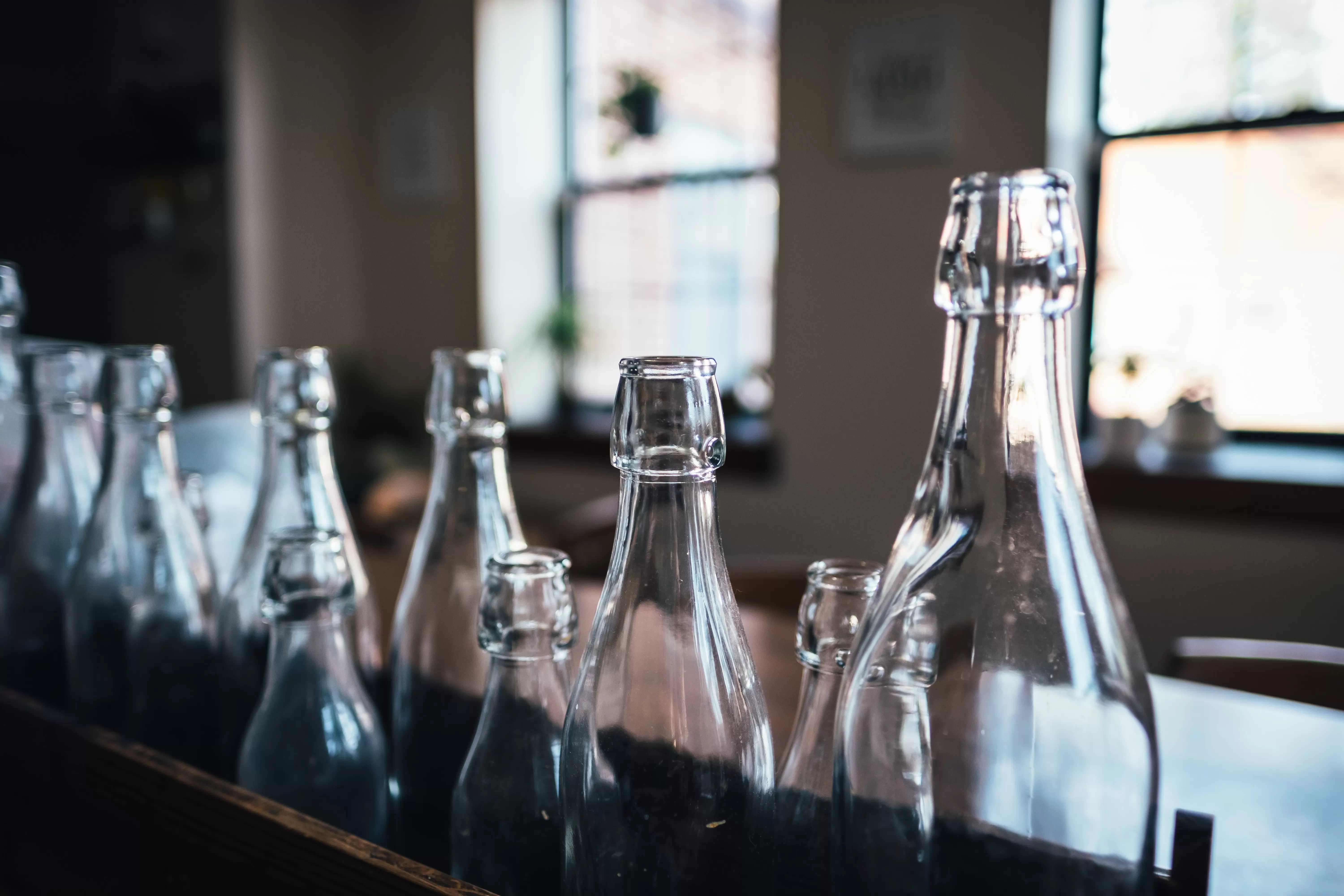




 SGD Pharma se lance dans le silicone pour les flacons pharmaceutiques - 13/03/2024
SGD Pharma se lance dans le silicone pour les flacons pharmaceutiques - 13/03/2024
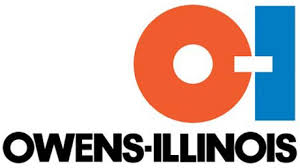 O-I va continuer à investir en France pour décarboner sa production - 04/03/2024
O-I va continuer à investir en France pour décarboner sa production - 04/03/2024
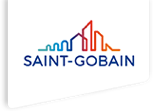 Saint-Gobain prêt à s'installer en Australie pour 2,5 milliards d'euros - 22/02/2024
Saint-Gobain prêt à s'installer en Australie pour 2,5 milliards d'euros - 22/02/2024
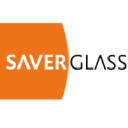 Orora rachète Saverglass - 09/12/2023
Orora rachète Saverglass - 09/12/2023
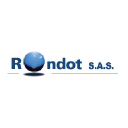 Rondot, fournisseur des verriers - 21/07/2023
Rondot, fournisseur des verriers - 21/07/2023
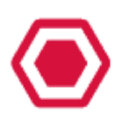 Pochet, du flaconnage en verre au multimatériaux | Flaconnage en verre et multimatériaux - 12/07/2023
Pochet, du flaconnage en verre au multimatériaux | Flaconnage en verre et multimatériaux - 12/07/2023
